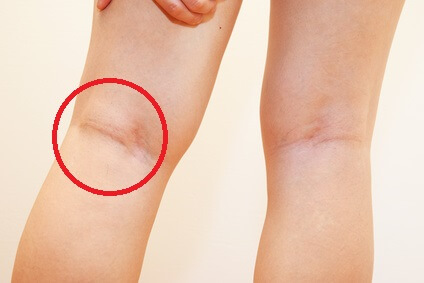

A stroke (damaged brain tissue due to loss of blood flow) can present with a loss of sensation throughout one side of the body, including in the knee.

This can occur via a direct injury for example, reduced sensation in the knee is a common complication of knee replacement surgery. Problems with the femoral nerve or its branches: This can contribute to knee numbness.Neurological dysfunctionĬauses of knee pain related to neurological dysfunction may include the following. However, any sensation is complex and can be affected by conditions that don't directly interfere with the sensory pathway from the knee, including psychological conditions and chronic pain syndromes. Knee numbness is primarily caused by problems with the nervous system, such as damage to the femoral nerve. The camera displays images on a video screen and your doctor uses these images to guide miniature surgical instruments.Īrthroscopy is used to treat conditions inside the knee, such as meniscus tears, that may give rise to a Baker’s cyst.What causes numbness and tingling in the knee? In this procedure, your doctor makes tiny incisions under anesthesia, then inserts a small camera called an arthroscope into the knee joint. However, it may be recommended if you have painful symptoms that are not relieved with nonsurgical treatment or if your cyst returns repeatedly after aspiration.Īrthroscopy. Surgical treatment for a Baker’s cyst is rarely needed. Aspiration is often performed using ultrasound to guide the placement of the needle. In this procedure, your doctor numbs the area around the cyst, then uses a needle to drain the excess fluid from the joint. Your doctor may inject a corticosteroid medication into your knee joint to reduce inflammation. Drugs like ibuprofen and naproxen can help reduce pain and swelling.

Nonsteroidal anti-inflammatory medications.Decreasing your activity and avoiding high-impact activities that irritate the knee, such as jogging and aerobics, can help alleviate symptoms. Your doctor may recommend simply observing the cyst over time to ensure that it does not grow larger and cause painful symptoms. For cysts that do not disappear, initial treatment is always nonsurgical in nature and may include one or more of the following: Most Baker’s cysts will go away on their own. Although a cyst cannot be seen on an x-ray, one may be ordered so that your doctor can look for narrowing of the joint space and other signs of arthritis in the joint. X-rays provide images of dense structures, such as bone. Imaging tests may be ordered to help confirm the diagnosis and provide more information about your condition. Often, a cyst will become firm when the knee is fully extended and soft when the knee is bent. Your doctor will also palpate (feel) the back of your knee where the cyst is located. Joint stiffness and limited range of motion.A clicking or popping noise when you bend your knee.During the exam, he or she will look for: Your doctor will then perform a careful examination of your affected knee, comparing it to your “normal” knee. He or she will want to know if you have had a previous knee injury.
TIGHTNESS AND FLUID IN KNEE FULL
Your doctor will take a full medical history and ask you to describe your symptoms.


 0 kommentar(er)
0 kommentar(er)
